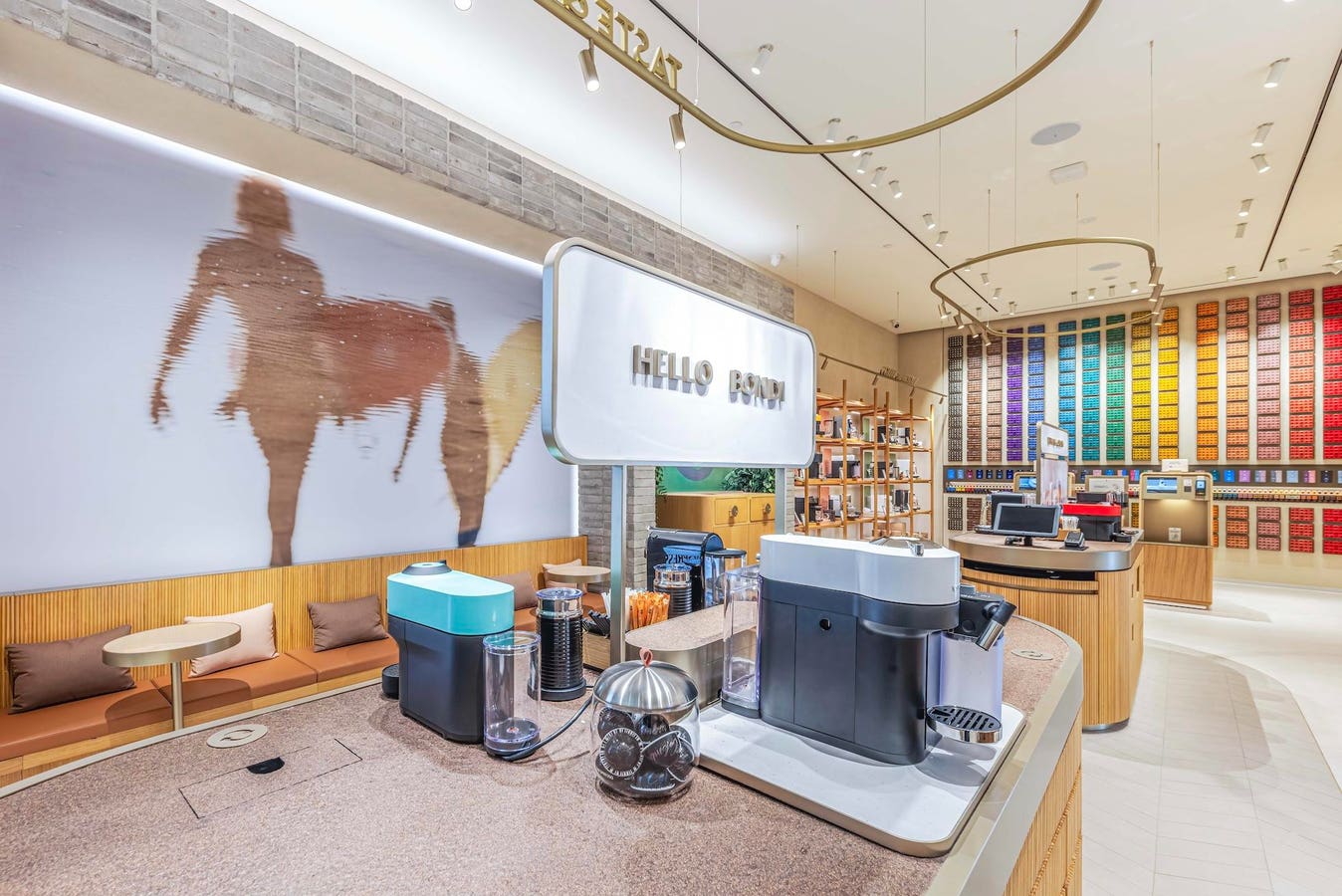As physical retail regains momentum, brands are rethinking the indisputable relevance of stores and looking for ways to elevate the shopping experience they provide to customers. As many retailers still struggle to balance the transactional and experiential roles of their stores, it has become apparent that retail design plays a considerable part in unlocking optimal consumer engagement, which can in turn favor conversion and loyalty.
Stores Must Facilitate Engagement, From Transaction To Experience
Contrary to recent beliefs, in-store and online shopping are equally popular. In fact, even GenZ, the digital-native generation, interacts almost equally with brands in-store and online. It is estimated that this demographic likes to shop both at brick-and-mortar stores (97%) and online (95%), based on a survey conducted by the ICSC. This puts a certain pressure on brands to deliver the same type of seamless path-to-purchase in-store as they do online, while also providing tangible benefits to shoppers coming to visit a store. Striking the right balance between encouraging convenient purchases and enjoyable discovery can be challenging, especially as the optimal goal is to facilitate both efficiently.
Store layouts must now allow for a seamless navigation from product discovery to purchase, but also enable value-add points of engagements that create enriching shopping experiences. Nespresso’s latest boutique concept is a great example of a brand leveraging retail design to offer unique, coherent brand experiences to visitors: while its stores have a clear section for capsules and machines purchases, the coffee brand has also developed areas designed to immerse shoppers in the coffee universe, from tastings to learnings about Nespresso’s coffee sourcing.
As explained by Gensler, a leading architecture and design firm, in its 2024 design forecast, “experiences are no longer either/or; they are AND. Through the years, we’ve seen the full spectrum — from convenience to engagement, from transaction to experience.” Finding the right balance to deliver optimal consumer engagement is not straightforward or easy, with retailers often falling on one end of the spectrum. Take Showfields for example: the retailer has been so focused on providing an amusing, immersive and explorative experience for shoppers that it has failed to tie it to transaction, with shoppers visiting its stores out of curiosity but often leaving without a purchase. It has since filed for bankruptcy and looking to revise its commercial mode. On the other hand, many retailers operate stores that look like warehouses, filled with products available for purchase and empty in terms of soul, consumer engagement and experiences designed to make visits a unique, enjoyable one. This is the case of many old H&M stores, as well as legacy brands like Old Navy or Gap
GPS
Retail Design Is Expected to Accelerate The Use of Physical-Human-Digital Engagement
Over the past five years, retailers have starting welcoming technology into their stores, sometimes to provide meaningful value, often to provide entertainment with unclear purpose. When designed with intention, retail spaces can hugely benefit from the association of tech-enabled in-person interactions, which can help deliver seamless, personalized customer experiences. “As physical and digital experiences continue to blur, the intersection is increasingly important to map. Brands are investing in digital experiences that are additive in a meaningful way — introducing ease, streamlining processes, or creating connection,” emphasizes Gensler.
Crate & Barrel recently launched a new store that perfectly exemplifies this dynamic. The retailer’s new flagship store in SoHo decided to elevate its role of a furniture store meant to help consumers plan for their ideal home, from add-on decor to main pieces of furniture and appliances. The team behind this store created a design studio section, which empowers designers to leverage new technology to help shoppers design their ideal space. “The designers bring our customer’s vision to life through collaborative conversations and technology, traveling to their homes, and conveniently scheduling an appointment in the store, virtually, or in their homes, offering industry-leading service and state of the art floor planning tools,” explained Sebastian Brauer, senior vice president of product design at Crate & Barrel in a press release. Empowering staff with valuable and efficient technology-driven tools and allowing customers to interact with engaging technology touchpoints is the direction retail is going. How positively it impacts consumer engagement will depend on how physical and digital touchpoints will have been designed in store and with which clear purpose.
Building meaningful, differentiated brand experiences through in-store consumer engagement is the ambition of most, if not all retailers. Retail design trends for 2024 indicate that brands will have to be creative in blending experiential and transactional retail to deliver engaging store visits that accommodate all types of shopper missions. At the same time, the implementation of tech-driven innovation is expected to accelerate in store, with the clear objective to help staff deliver optimal customer support and shoppers engage with brands meaningfully, rather than just provide technology touchpoints that serve no purpose.
Read the full article here





